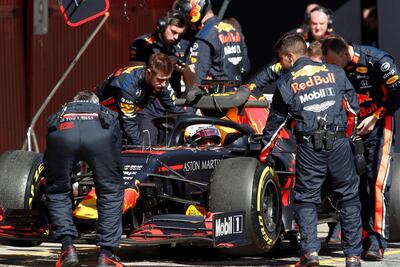Media giants are realising what Netflix already knows: streaming is expensive.
The costs are adding up as Walt Disney, WarnerMedia and Discovery build their own online video services to make up for shrinking cable and DVD businesses. Those investments, coupled with efforts to pull back content from Netflix and other online services, mean revenue and profit will be under pressure for years.
“Starting a direct-to-consumer service takes an incredibly strong stomach for losses,” said BTIG analyst Rich Greenfield. “If you want to win, it’s very expensive.”
Deep-pocketed buyers like Netflix and Amazon initially helped media companies survive the decline in DVD sales and rentals by providing a new outlet for movies and TV shows. But now they’ve become a threat - luring customers away from lucrative cable subscriptions - and have forced major media companies to develop their own online services.
Disney lost just under $100 million on streaming in the first quarter and expects to lose an additional $200m on its online video efforts in the second quarter, mostly to develop ESPN+, its subscription sports channel. The company will also surrender about $150m in operating income after cutting off licensing to competing services, executives said on a February call. Captain Marvel, a superhero blockbuster that opened Friday, is the first Disney movie in years that won't eventually show on Netflix.
Michael Nathanson, a media analyst with MoffettNathanson, expects the Burbank, California-based entertainment giant to lose more than $1 billion this year and another $1bn next year by forgoing licensing deals and investing in its online video business, including Disney+, which will be the TV home for the company’s movies when it debuts later this year.
AT&T, which bought Time Warner for $85bn last year, is looking at a minimum of $1bn in new annual costs for added programming it wants from HBO, the premium cable network. The phone company sees streaming as a way to attract wireless customers and take revenue from Netflix. HBO spent about $2.2bn on programming in 2017, and AT&T has said it will boost the network’s budget by 50 per cent.
In January, Viacom sunk $340m in Pluto TV, an advertising supported multi-channel TV services that operates online.
It takes deep pockets to be like Netflix, which will spend about $14bn on content this year.
For starters, you need to invest large sums in technology. Disney bought tech expertise by acquiring a majority stake in BAMTech, which handles the back-end infrastructure for the company’s streaming offerings. Media companies also need to hire engineers to ensure their video services don’t crash on different platforms like Roku, Amazon and Apple, said Needham & Co analyst Laura Martin.
“You need code writers who are very expensive.” Ms Martin said. “It’s not like the old days when a signal bounced off a satellite and everyone gets it on a set-top box.”
But the biggest cost is creating exclusive shows and films for those services. CBS has launched several original series exclusively for its online $5.99 a month channel, CBS All Access. One of them is Star Trek: Discovery, which costs on average $8m per episode, making it one of the most expensive shows in TV history, according to Variety.
“All these companies are really splurging on new shows,” Bloomberg Intelligence analyst Geetha Ranganathan said. “With all the different options available today to the consumer, content becomes the true differentiater.”
Besides the upfront costs, there’s also the lost income by no longer selling hits to rivals. On an earnings call last month, Discovery chief executive David Zaslav said his company has “purposely left meaningful revenue dollars on the table” by not selling past seasons of its shows to streaming services.
Outside films and TV shows, sport is also undergoing something of a revolution and if Amazon.com provides the New York Yankees with capital support to acquire the remaining stake in its YES network, the move may mark the beginning of a new sports era.
In fact, the pairing of the two entities could be the "step towards unbundling regional sports networks", said Morgan Stanley’s Benjamin Swinburne in a research note. While the investment itself is "somewhat unremarkable" - particularly given Amazon’s enormous amount of free cash flow - the longer-term implications for the TV and sports business could be huge.
The Yankees owning their own network makes sense financially, Mr Swinburne said, but a solo YES network would impact the upside it benefited from as a strong asset in a portfolio of regional sports networks (RSNs). Unbundled, it would have to negotiate as a standalone network with distributors.
The shifting of rights structure is ongoing for the sports TV business, but Morgan Stanley believes the long-term trend likely points to streaming while near-term specifics remain unclear.
Elsewhere, Discovery expects to sink $200m to $300m into its digital efforts in 2019. The company, owner of HGTV and Animal Planet, recently created an online video service for golf fans and has hinted at starting a subscription video channel dedicated to Chip and Joanna Gaines, the stars of Fixer Upper. It also streams live matches in Europe on its Eurosport Player, which it calls "the Netflix for sports".
Formula One, meanwhile, has turned to Netflix to seduce a younger audience with a 10-part documentary series retracing the dramas of the 2018 world championship although Mercedes and Ferrari opted only for supporting roles.
The goal is to "bring F1 to popular culture", said Ellie Norman, the marketing and communications chief of F1 ahead of the series which was broadcast for the first time on Friday.
The documentary, Formula 1: Drive to survive, represents the latest move by the sport to become a heavyweight player on social media, widening its public reach at the same time.
As well as the return of some races to free-to-air television, F1 has also partnered with Snapchat and backed an eSport championship.
They are developments pioneered by US group Liberty Media, the owners of the sport since January 2017 when they took over from long-standing ringmaster Bernie Ecclestone.
"This is an example of the change coming in Formula One," said sporting director Ross Brawn.
"Since we started this new era, something that has come across very strongly from the fans is that they want to understand about the drivers.
"The philosophy of Formula One now is to engage in those areas and make the sport much more special than just what is going on out on the track."
Rather than presenting a blow-by-blow account of how the 21 races in the 2018 championship unfolded, the Netflix series looks at specific chapters in the race for the title as told by drivers, team bosses and paddock insiders.
The series follows them in their daily lives as well as at circuits.
For would-be Netflix and co challengers, building a global streaming service is “risky” because media companies are trading a sure thing - licensing revenue - for a business model where “no one has actually generated material free cash flow yet,” Mr Nathanson said. Netflix expects to have a negative free cash flow of $3bn this year as it spends eye-popping sums on shows and movies.
Media companies will hit “peak spending” this year as they invest to get their streaming services off the ground, Ms Martin said. Most will add enough customers to break even after their third year, she predicts. Disney said last month that ESPN+ now has 2 million paid subscribers, double from five months before. CBS and Showtime combined have over 8 million online subscribers, while HBO has about 8 million online-only subscribers, though many of them watch through Amazon and Hulu, giving those companies control over valuable viewer data, according to Mr Greenfield.
Not everyone is willing to accept the trade-offs. While Disney plans to keep its movies and shows for its own properties, Comcast's NBCUniversal plans to continue licensing programmes to others - and then keep the rights to some shows for its new streaming service, which is expected next year. AT&T's WarnerMedia just renewed a licensing deal with Netflix for reruns of Friends, despite plans to start its own streaming channel later this year.
Mr Nathanson summed up their thinking this way: “Strategy is nice. Money is nicer.”



